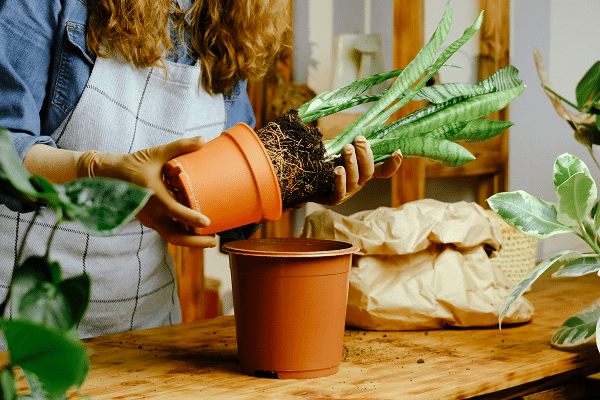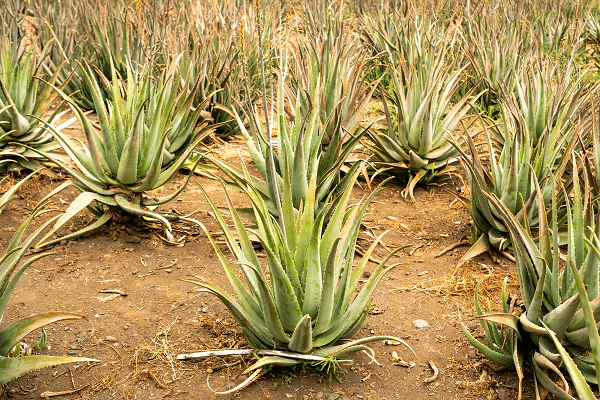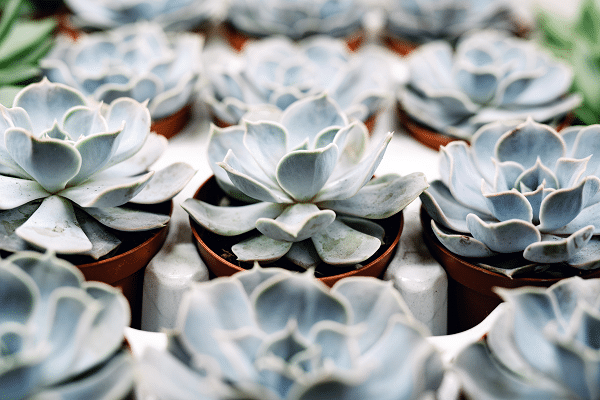Whether you’re located in a drought-prone region or simply lead a hectic life that leaves little time for plant care, it’s worth exploring the world of low-water plants. These green wonders have adapted to thrive in conditions where water is scarce, reducing the burden of frequent watering while maintaining their vibrant beauty. From snake plants to aloe vera, there are numerous plant species that can brighten your space without demanding constant attention. This post will take you on a journey through such plants, detailing their unique characteristics, and care requirements. So, for anyone keen on a low-maintenance green thumb, read on.
Snake Plant
The Snake Plant, or Sansevieria trifasciata, is renowned for its hardiness and ability to survive with little water. Native to West Africa, it has evolved to withstand long periods of drought by storing water within its thick, waxy leaves. Therefore, this plant only needs to be watered once every two weeks, or even less in a cooler climate. Another intriguing aspect of the Snake Plant is its ability to purify the air by absorbing toxins, making it not just a low-maintenance but also a health-enhancing addition to any room.
Snake Plants are versatile in terms of light conditions. They can survive in everything from low light to direct sunlight. However, indirect, moderate light is ideal. Apart from their adaptability, Snake Plants add a striking aesthetic element to any space, thanks to their tall, upright leaves with unique patterns.
Aloe Vera
Aloe Vera, a succulent native to the Arabian Peninsula, is a prime example of a plant that thrives on minimal water. Its plump leaves, full of a gel-like substance, are designed to store water for extended periods of time. Because of this unique feature, Aloe Vera requires watering only every 2-3 weeks, and even less often during the winter months. Moreover, it’s a plant that doesn’t just look good but serves a purpose, too, given its well-documented medicinal uses.
Aloe Vera prefers bright, indirect sunlight, and can become discolored if exposed to too much direct sun. Moreover, Aloe Vera doesn’t tolerate standing water well. So, it’s essential to plant it in a well-draining soil mix, typically used for cacti and succulents, and to ensure that its container has good drainage. By meeting these conditions, anyone can enjoy the dual benefits of Aloe Vera’s aesthetic appeal and healthful properties.
Ponytail Palm
Despite the name, the Ponytail Palm is not actually a palm but a succulent. This plant’s unique bulbous trunk functions as a water reservoir, enabling the plant to survive long periods without watering. The water stored in the trunk is used to nourish the plant in drier conditions, which means it requires watering only every couple of weeks during the growing season and less frequently during the winter months.
Lighting conditions for the Ponytail Palm are quite flexible. It can thrive in anything from bright, direct light to low light scenarios. However, more sunlight typically leads to faster growth. Temperature-wise, the Ponytail Palm is quite hardy. It can handle typical indoor temperatures well and is also resistant to colder conditions. With its cascading leaves and unique trunk, the Ponytail Palm is an attractive, low-maintenance addition to any plant collection.
Lavender
Lavender, a well-loved plant for its soothing scent and beautiful purple blooms, is surprisingly resilient to dry conditions. Its origins in the Mediterranean region have endowed it with the ability to withstand long, hot summers with little rainfall. Thus, once established, Lavender needs only occasional deep watering, making it an excellent low-water plant for gardens or balconies.
When it comes to growing Lavender, sun is your friend. This plant craves plenty of light and well-drained soil. It is not a fan of high humidity or heavy, clay-based soils, as these can lead to root rot. Along with its low-water needs, Lavender brings along the benefits of a delightful aroma and attractive flowers, making it an excellent plant to enjoy indoors or out.
Echeveria
Echeveria, a native of the semi-desert regions of Central America, belongs to the succulent family, known for their water-storing abilities. Its fleshy, often colorfully tinted leaves are designed to retain water, which allows the plant to survive on minimal watering. Typically, watering every two weeks is sufficient for Echeveria, but during the winter months, the frequency should be reduced even further.
Echeveria is a sun-loving plant that needs at least four to five hours of bright, indirect light every day to maintain its vibrant colors. When grown in the right conditions, Echeveria can offer a stunning display of shapes and colors. From ruffled leaves to rosette formations and hues ranging from blue-green to deep purple, this low-water plant can provide an exciting visual element to any space.
Zz Plant
The Zz Plant, or Zamioculcas zamiifolia, is highly prized for its ability to survive under nearly any conditions. This plant is particularly known for its capacity to tolerate neglect, including low light and infrequent watering. As a drought-tolerant plant, the Zz Plant stores water in its rhizomes (underground stems) and requires watering only when the soil has thoroughly dried out, typically every 2-3 weeks.
A common mistake with the Zz Plant is overwatering, which can lead to root rot. Therefore, it’s crucial to err on the side of underwatering. The Zz Plant can also survive in low light conditions, though it prefers bright, indirect light. With its glossy, dark green leaves and tough nature, the Zz Plant is an excellent low-water, low-maintenance choice for any indoor space.
Pothos
Pothos, also known as Devil’s Ivy, is renowned for its adaptability and easy care, making it an excellent choice for beginners or those with busy schedules. This plant can survive with less watering compared to many other indoor plants. The watering frequency can range from once a week to once every two weeks, depending on the light conditions and the time of year. The primary rule is to allow the top inch of the soil to dry out between watering.
Pothos is also flexible in terms of light conditions. It can survive in low light but will grow more robust and vibrant with more light exposure. However, direct sunlight should be avoided as it can scorch the leaves. When it comes to care, the primary caution is to avoid overwatering, which can lead to root rot. By just meeting its minimal requirements, Pothos can add a beautiful and lush green touch to indoor spaces with its trailing vines.
Conclusion
Embracing low-water plants can add beauty and vitality to your home or garden while minimizing the burden of plant care. The unique attributes and minimal watering needs of Snake Plant, Aloe Vera, Lavender, Ponytail Palm, Echeveria, Zz Plant, and Pothos underscore their suitability for those seeking low-maintenance greenery. So, whether the goal is to conserve water, adapt to a drought-prone environment, or simply to enjoy the aesthetic and health benefits these plants offer without frequent watering, these resilient species can be a perfect choice. Explore the world of low-water plants and enrich your surroundings with their understated charm and resilience.






